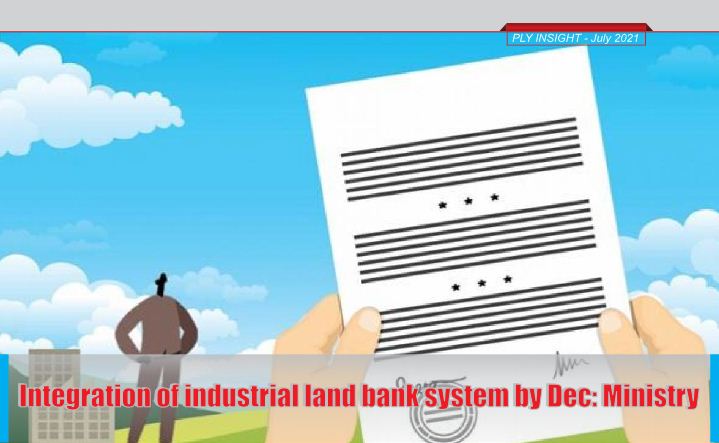
Economy Poised to Shrug off Second Wave
- जुलाई 20, 2021
- 0
As the second wave of the pandemic subsides and economic activity revives, those in charge are confident that the economy will shrug off its impact. The chief economic advisor has said so. The Reserve Bank of India (RBI) governor has indicated as much. The merchants of gloom, who saw the health crisis as spelling disaster for the Indian economy, will be proved wrong, let us hope.
At its peak, the number of cases in the second wave was four times that in the first wave. The first wave saw the Indian economy shrink by 7.3 per cent. As casualties were much greater in the second wave, some were quick to conclude that it would inflict an even greater toll on the economy. The second wave, however, promises to be far less severe in its economic impact.
Modern economies are decentralized, so aggregate output is hugely resilient in the face of a variety of physical shocks to supply. Manpower, both skilled and unskilled, is plentiful enough to cope with any loss of lives in war or peacetime.
The present lockdown is far more nuanced. Instead of a nationwide lockdown, we have localized lockdowns. Interstate travel and transport were on. Firms have adapted to lockdowns. Not just through work from home arrangements but also with respect to logistics and inventories.
We do not have mindless prohibitions on the movement of individuals. So lockdown fatigue is less intense. There are signs of migrant labour, which fled at the first hint of lockdown, returning to the work places. The availability of vaccines allows a quicker movement towards normalcy. It also affords a measure of protection against a third wave. The boost to health infrastructure means we are better prepared for a third wave.
Two broad inferences are possible. First, the hit to economic activity will be mostly confined to the first quarter. Secondly, a third wave, if it materializes, is unlikely to be hugely disruptive for the economy.
True, the pandemic shock will cause NPAs to rise again. The data on moratorium on loan payments and restructuring suggests that the problems are mainly in retail assets and small enterprises, not in large corporate accounts. Bankers believe the rise in NPAs will be manageable.
The problem that banks face now is not so much an increase in NPAs as tepid loan growth. This is partly because private investment is yet to revive strongly.
अर्थव्यवस्था दूसरी लहर के असर से निकलने को तैयार
कोविड-19 महामारी की दूसरी लहर अब कमजोर पडने लगी है। इस अच्छी खबर के बीच नीति-निर्धारकों में इस बात की उम्मीद जगी है कि देश की अर्थव्यवस्था महामारी की प्रचंड मार से पूरी तरह उबर जाएगी। सरकार के मुख्य आर्थिक सलाहकार ने ऐसी ही आशा प्रकट की है। भारतीय रिजर्व बैंक (आरबीआई) के गवर्नर ने भी ऐसे ही संकेत दिए हैं। आशा करनी चाहिए कि कोविड महामारी को भारतीय अर्थव्यवस्था पर दीर्घ अवधि तक असर डालने वाली त्रासदी बताने वाले लोगों की आशंकाएं निर्मूल साबित होंगी। दूसरी लहर में कोविड संक्रमण जब चरम पर था तो प्रतिदिन संक्रमित होने वाले लोगों की संख्या पिछली लहर की तुलना में चार गुने के स्तर तक पहुंच गई थी। पहली लहर की चपेट में आकर भारतीय अर्थव्यवस्था 7.3 प्रतिशत तक फिसल गई। दूसरी लहर में अधिक लोगों को अपनी जान गंवानी पड़ी जिसे देखते हुए कुछ लोग तुरंत इस निष्कर्ष पर पहुंच गए कि इस बार अर्थव्यवस्था को पहले से भी अधिक कीमत चुकानी होगी। हालांकि अब ऐसा लग रहा है कि दूसरी लहर का आर्थिक असर उतना नहीं हुआ है जितनी आशंका जताई जा रही थी।
आधुनिक अर्थव्यवस्थाएं विकेंद्रित हैं, इसलिए आपूर्ति में कई तरह की बाधाएं आने पर भी सकल उत्पादन की रफ्तार बहुत सुस्त नहीं पड़ती है। कुशल और अकुशल दोनों तरह के लोगों की तादाद इतनी है कि युद्ध या सामान्य परिस्थितियों में जान-माल की क्षति होने पर भी विशेष फर्क नहीं पड़ता है और अर्थव्यवस्था की जरूरतें पूरी हो जाती हैं।
दूसरी लहर पर अंकुश लगाने के लिए लॉकडाउन तो लगाया गया, लेकिन यह सीमित स्तर पर रहा और आर्थिक गतिविधियां पूरी तरह नहीं थमीं। पूरे देश के बजाय लॉकडाउन स्थानीय स्तर पर लगाया गया। अंतर-राज्यीय यात्रा और परिवहन बदस्तूर जारी रही। कंपनियां भी लॉकडाउन के बीच काम करना सीख गई। चुनौतियों के बीच भी माल ढुलाई एवं भंडारण निर्बाध रूप से जारी रखने की व्यवस्था भी सुनिश्चित कर ली गयी।
पिछली बार की तरह लोगों के आने-जाने पर मनमाना प्रतिबंध भी नहीं लगाया गया। कुल मिलाकर कह सकते हैं कि लॉकडाउन से बहुत अधिक असर नहीं हुआ है। लॉकडाउन की आशंका से अपने गृह प्रदेशों एवं जिलों को लौट आए मजदूरों के भी अब वापस आने के संकेत मिलने लगे हैं। कोविड-19 से बचाव के टीके उपलब्ध होने के बाद स्थिति तेजी से सामान्य हो रही है। तीसरी लहर आने की आशंका भी टीके आने के बाद कमजोर पडने लगी है। स्वास्थ्य सुविधाएं दुरुस्त की जा रही हैं जिससे अगर तीसरी लहर आई तो भी देश उससे अधिक सशक्त तरीके से निपट लेगा। संक्षेप में, इन तमाम बातों से दो निष्कर्ष निकाले जा सकते हैं। पहला, महामारी का असर मोटे तौर पर पहली तिमाही तक ही सीमित रहेगा। दूसरी बात यह कि तीसरी लहर आती है तो भी अर्थव्यवस्था पर बड़ी चोट नहीं कर पाएगी।
यह सच है कि कोविड महामारी की वजह से एनपीए फिर बढ़ेगा। ऋण भुगतान से अस्थायी छूट और इनके पुनगर्ठन से संबंधित आंकड़े दर्शाते हैं कि मुख्य समस्या खुदरा परिसंपत्तियों और छोटे उद्यमों के साथ है और बड़ी कंपनियां पूरी तरह ऋण भुगतान में मुस्तैद रही हैं। बैंकरों का मानना है कि एनपीए में इजाफे से निपटने में उन्हें परेशानी नहीं होगी। एनपीए में इजाफा बैंकों के लिए कोई बड़ी समस्या नहीं है लेकिन ऋण आवंटन की सुस्त रफ्तार उनके लिए चिंता का विषय है। इसकी एक वजह यह भी है कि निजी निवेश जोर नहीं पकड़ पा रहा है।


































































